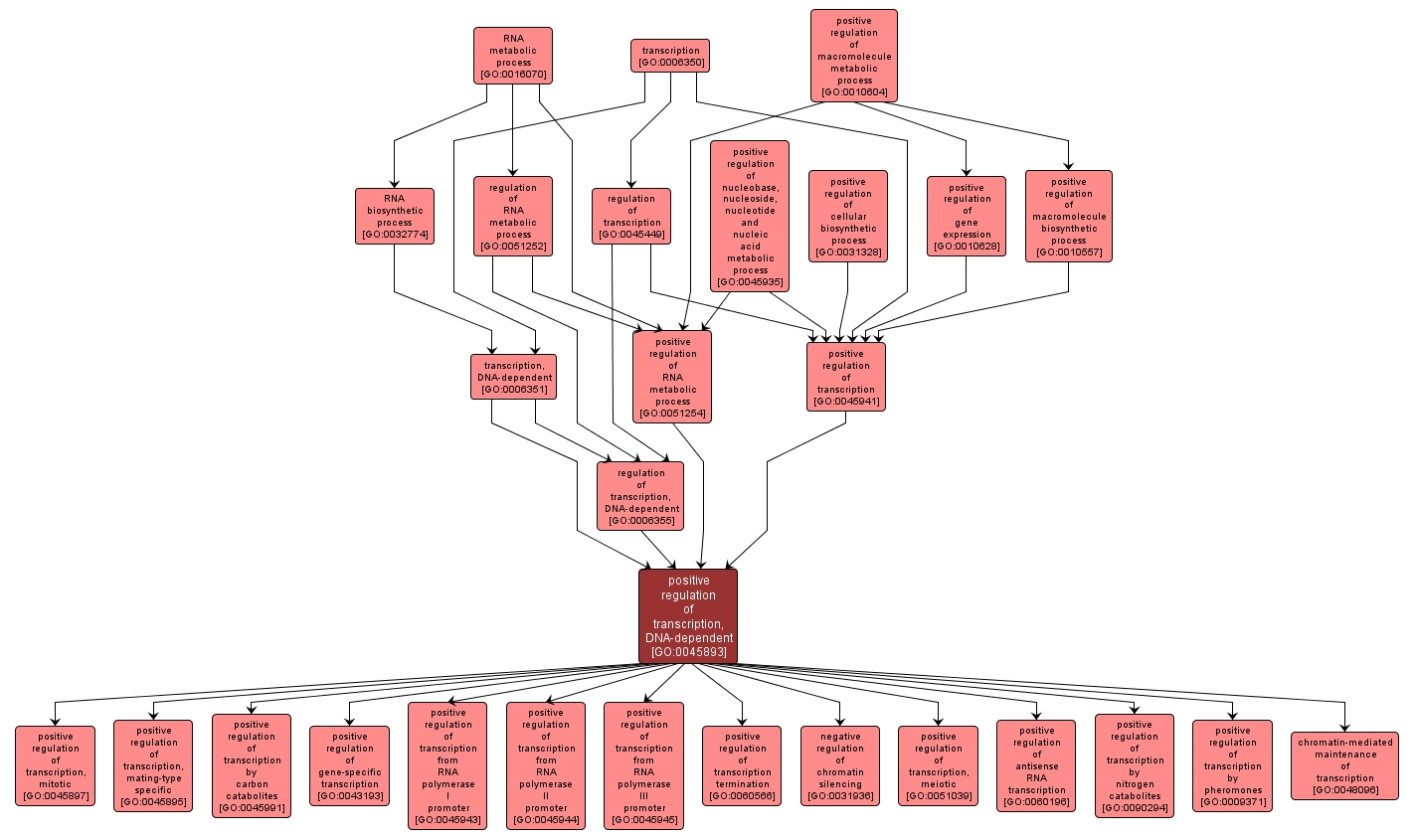GO TERM SUMMARY
|
| Name: |
positive regulation of transcription, DNA-dependent |
| Acc: |
GO:0045893 |
| Aspect: |
Biological Process |
| Desc: |
Any process that activates or increases the frequency, rate or extent of cellular DNA-dependent transcription. |
Synonyms:
- stimulation of transcription, DNA-dependent
- up-regulation of transcription, DNA-dependent
- positive regulation of cellular transcription, DNA-dependent
- up regulation of transcription, DNA-dependent
- activation of transcription, DNA-dependent
- upregulation of transcription, DNA-dependent
|
|

|
INTERACTIVE GO GRAPH
|














